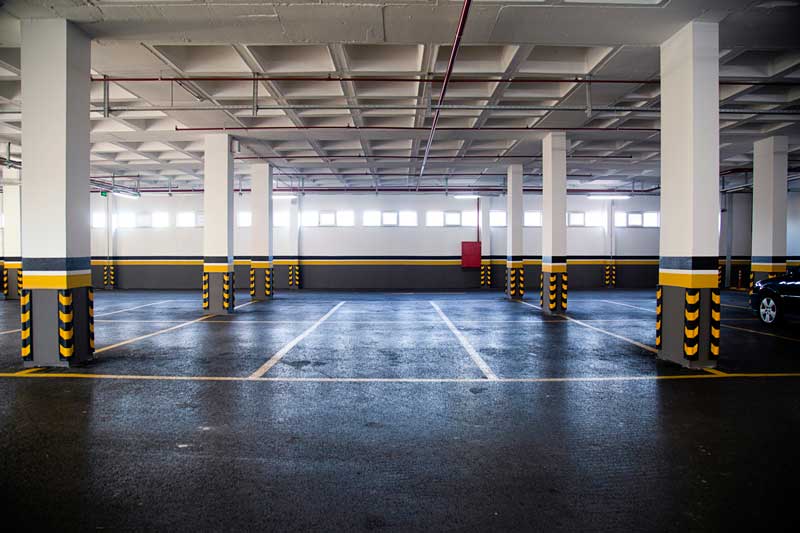Parking Garages
Enclosed parking garages present a known hazard related to the buildup of exhaust gases from vehicles and must be properly ventilated. All enclosed parking garages should have carbon monoxide and nitrogen dioxide sensors that are properly installed and maintained in a manner that will activate the ventilation needed to remove the hazards from CO and NO2.
Relevant Code Citations:
IMC 404.1 Enclosed parking garages.
Where mechanical ventilation systems for enclosed parking garages operate intermittently, such operation shall be automatic by means of carbon monoxide detectors applied in conjunction with nitrogen dioxide detectors. Such detectors shall be installed in accordance with their manufacturers’ recommendations.
Reason: Enclosed parking garages require mechanical ventilation to safeguard the building occupants from emissions of high levels of carbon monoxide (CO) by cars and/or nitrogen dioxide (NO2) from diesel engines. In most enclosed parking garages, the operation of the ventilation system consumes the major portion of the total energy use of the facility. Reducing the energy use for ventilation while maintaining adequate indoor air quality can be achieved using demand ventilation control strategies. However, permitting motion detectors to operate the ventilation system does not promote energy efficiency and will not provide optimum life safety protection for the following reasons:
- The mechanical ventilation system will run unnecessarily every time a vehicle or person moves even though the CO or NO2 concentrations are within the safe indoor air quality levels.
- Dangerous levels of CO and/or NO2 from an idling vehicle will go undetected by motion detectors.


